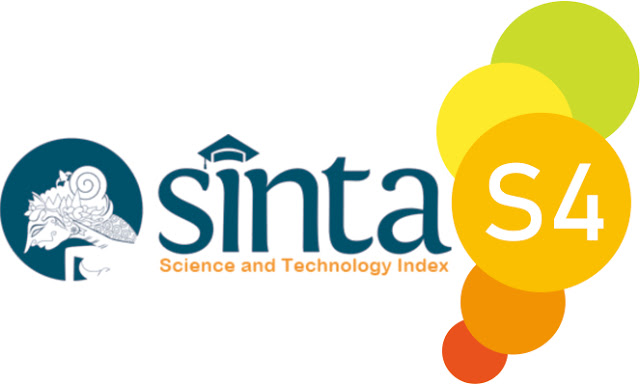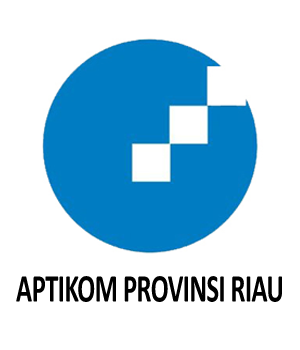Implementation of Fuzzy Logic Using Mamdani Method to Determine The Quantity of Bag Production (Case Study In Roman Indah Padang Bag Factory)
Abstract
Roman Indah bag Factory is a bag manufacturing company that receives orders from customers every month. Fuzzy Logic is used to define the production known so far, so that the preferred result can be used as a basis for manager's decision. In the calculation process, Fuzzy Logic Mamdani requires maximum and minimum production data, maximum and minimum demand data, and maximum and minimum inventory data. Fuzzy logic is able to map an input into an output without factor factors. Fuzzy logic is used to create a model of a system that is able to determine the quantity of production. the factors that affect the quantity of production. Fuzzy logic is called the old new logic because the science of modern fuzzy logic and methodological was discovered only a few years ago, in fact the concept of fuzzy logic itself has been in us for a long time. Mamdani method is the most common method when it comes to fuzzy methodology. Mamdani method uses a set of IF-THEN rules derived from experienced operators/experts. The Mamdani model is often known as the Max-Min model. By using Mamdani method in Roman Indah handbag factory can assist in the efficiency of time and labour, because using Mamdani method can calculate the amount of production in the next month, so from the results can be derived consideration material decision by the manager, whether in determining raw materials, promotion, bag model, consumer, HR, etc. so that more company profits.
Downloads
References
Abrori, Muchammad dan Amrul HP. (2015). “Aplikasi Logika Fuzzy Metode Mamdani Dalam Pengambilan Keputusan Penentuan Jumlah Produksi”. Kaunia.
Agboola A.H. et al. (2013). “Development of a Fuzzy Logic Based Rainfall rediction Model”. International Journal of Engineering and Technology.
Ami H.A. et al. (2016). “Penerapan Metode Fuzzy Sugeno Untuk Menentukan Harga Jual Sepeda Motor Bekas”, E-Jurnal Matematika. Hal. 176-182.
Emre Çanayaz, et al. (2013). “Interpretation of Thyroid Blood Tests Using Mamdani Type Fuzzy Logic Sets” Marmara University.
Ghasemi, Ebrahim dan Mohammad A. (2012). “Application Of Fuzzy Logic For Predicting Roof Fall Rate In Coal Mines”. Springer-Verlag London Limited. Page S311–S321
I Made BS, dan Gede BA. (2013). “Fuzzy Inference Sistem Mamdani Untuk Penentuan Kredit pada KPN Estika Dewata”. Jurnal Nasional Pendidikan Teknik Informatika (JANAPATI).
M. Muñoz, and E. Miranda. (2016). “A Fuzzy System for Estimating Premium Cost of Option Exchange Using Mamdani Inference: Derivates Market of Mexico”. IEEE Journal.
Minarni, dan Firman Aldyanto. (2016). “Prediksi Jumlah Produksi Roti Menggunakan Metode Logika
Fuzzy (Studi Kasus : Roti Malabar Bakery)” Jurnal TEKNOIF
Naba, Agus. (2009). ”Belajar Cepat Fuzzy Logic Menggunakan Matlab”. Penerbit ANDI. Yogyakarta
Navid SB, et al. (2013). “Fuzzy Logic Applications And Its Challenges“ International Journal of Advanced Research in Engineering and Applied Sciences.
Oktaviani, Laily. (2014). “Sistem Penentuan Perhitungan Jumlah Produksi Folding Gate Menggunakan Fuzzy Logic Pada PT. Jihan Jaya” Jurnal Sistem Informasi.
Poongodi, M, et al. (2012). “Cancer Prediction Technique Using Fuzzy Logic” International Journal of Current Research.
Rahmaddeni. (2014). “Penerapan Fuzzy Logic Dalam Menganalisis Tingkat Pendapatan Akhir Konsultan Produk Multi Level Marketing (Studi Kasus : PT. Orindo Alam Ayu Cabang Pekanbaru)” Jurnal Sains, Teknologi dan Industri.
Subas, Serkan et al. (2012). “Rule-based Mamdani Type Fuzzy Logic Model For The Predictionof Compressive Strength Of Silica Fume Included Concrete Using Non-Destructive Test Results” Springer-Verlag London Limited.
Sujoto, T. dkk. (2010). ”Kecerdasan Buatan”. Penerbit Andi. Yogyakarta
Yunus, Muhammad dan Sandi BWA. (2013). “Penerapan Logika Fuzzy(Mamdani) Untuk Menentukan Jumlah Produksi Roti Berdasarkan Data Persediaan Dan Jumlah Permintaan (Studi Kasus PT Bosindo Cahaya Anugerah)”. Jurnal TEKNOINFO.
Copyright (c) 2022 Dwipa Junika Putra, Nofriadi Nofriadi, Erlinda Erlinda

This work is licensed under a Creative Commons Attribution-ShareAlike 4.0 International License.
This is an open-access article distributed under the terms of the Creative Commons Attribution-ShareAlike 4.0 International License which permits unrestricted use, distribution, and reproduction in any medium. Users are allowed to read, download, copy, distribute, search, or link to full-text articles in this journal without asking by giving appropriate credit, provide a link to the license, and indicate if changes were made. All of the remix, transform, or build upon the material must distribute the contributions under the same license as the original.















